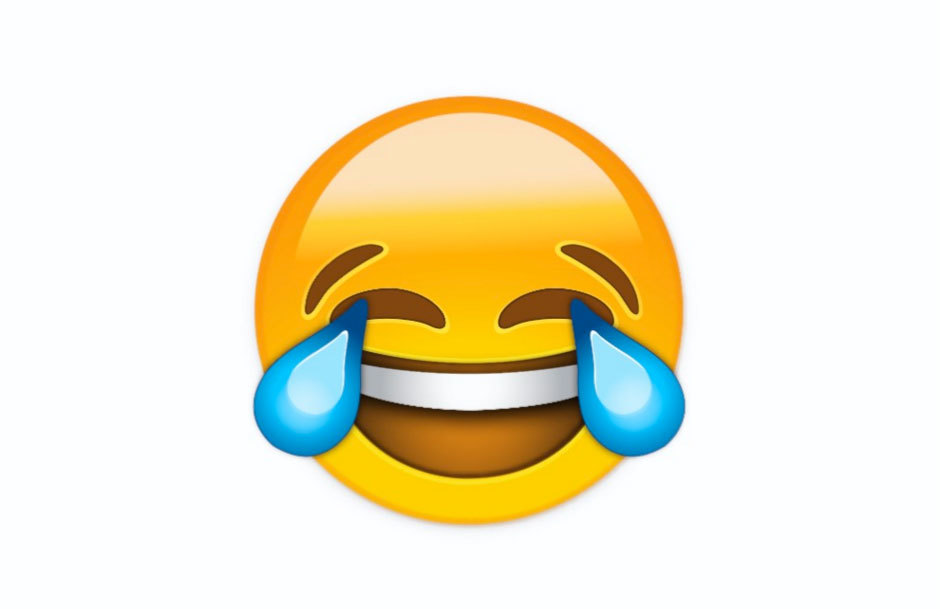Emoji - the word of 2015
On-line translator Oxford Dictionaries proclaimed the word 2015 not a word at all, but one of emoji, known on the Internet as “a person with tears of joy”. Last year, the word “vape” (electronic cigarette) won, and the year before, the favorite “selfie”. The tradition of choosing the word of the year has been going on since 2004, but the picture has never been awarded such an honor.

Emojis (from Japanese - pictures, symbols) are small digital images, icons on the keyboard of a phone or tablet. They are used to electronically express an idea or a specific emotion. And the term emoji itself is borrowed from the Japanese and comes from the combination of the words "picture", "symbol" + moji. The similarity to the English smile is random. Emoticons are also facial expressions, but consisting of a set of characters, such as ";)", ":)", etc.

For the first time in the history of Oxford Dictionaries nominations, a pictogram was crowned the word of the year. All this is due to the unprecedented popularity of this emoji on social media. According to most users, it is the aforementioned yellow "face" that literally spills with tears of laughter that best reflects the mood and conveys emotions.

This emoji has been added to other slang nominees. Such as, for example, “lambersexual” (English lumbersexual). This term means the deliberately careless and rude style of retro clothing: T-shirts, flannel shirts, knitted sweaters, vests and hats with fur. An important attribute of this image is a thick, broad beard, lush mustache and elongated hair, while clothing and hair should always be clean and well-groomed, and the image can be complemented with a bow tie.

The “words of the year” nomination increased the status of emojis, which already have not been the prerogative of teenagers for a long time. Symbols took the form of a visual expression that goes beyond the language framework and expands the possibilities of communication. Emoji can mean many different words at once. Pictures eloquently reflect the essence, in addition to the definition, also give an emotional coloring to the thought. Emoji is a popular and versatile form of communication that is equated to words.

The choice of a “face with tears of joy” is really not random. Oxford Dictionaries has teamed up with SwiftKey, using leading mobile technology, to do some research. The results made it possible to determine the frequency of use of statistics for some emojis of the most popular characters in the world. As it turned out, the emoji “face with tears of joy” was most often used in 2014. If we look in percentage terms, then in the UK it is up to 20%, and in the USA it is up to 17%.

In a statement, Oxford Dictionaries President Casper Grathwohl wrote:

Emojis (from Japanese - pictures, symbols) are small digital images, icons on the keyboard of a phone or tablet. They are used to electronically express an idea or a specific emotion. And the term emoji itself is borrowed from the Japanese and comes from the combination of the words "picture", "symbol" + moji. The similarity to the English smile is random. Emoticons are also facial expressions, but consisting of a set of characters, such as ";)", ":)", etc.

For the first time in the history of Oxford Dictionaries nominations, a pictogram was crowned the word of the year. All this is due to the unprecedented popularity of this emoji on social media. According to most users, it is the aforementioned yellow "face" that literally spills with tears of laughter that best reflects the mood and conveys emotions.

This emoji has been added to other slang nominees. Such as, for example, “lambersexual” (English lumbersexual). This term means the deliberately careless and rude style of retro clothing: T-shirts, flannel shirts, knitted sweaters, vests and hats with fur. An important attribute of this image is a thick, broad beard, lush mustache and elongated hair, while clothing and hair should always be clean and well-groomed, and the image can be complemented with a bow tie.

The “words of the year” nomination increased the status of emojis, which already have not been the prerogative of teenagers for a long time. Symbols took the form of a visual expression that goes beyond the language framework and expands the possibilities of communication. Emoji can mean many different words at once. Pictures eloquently reflect the essence, in addition to the definition, also give an emotional coloring to the thought. Emoji is a popular and versatile form of communication that is equated to words.

The choice of a “face with tears of joy” is really not random. Oxford Dictionaries has teamed up with SwiftKey, using leading mobile technology, to do some research. The results made it possible to determine the frequency of use of statistics for some emojis of the most popular characters in the world. As it turned out, the emoji “face with tears of joy” was most often used in 2014. If we look in percentage terms, then in the UK it is up to 20%, and in the USA it is up to 17%.

In a statement, Oxford Dictionaries President Casper Grathwohl wrote:
You can see how traditional alphabet fonts are trying to match the rapid development of 21st century communications. Therefore, it is not surprising that an emo pictographic font satisfies such requirements.
